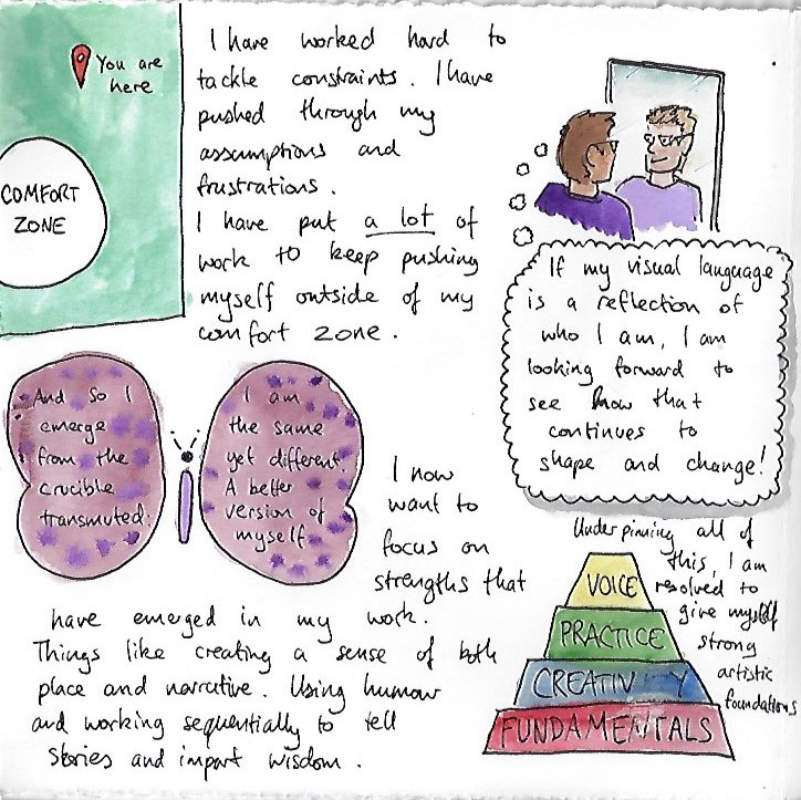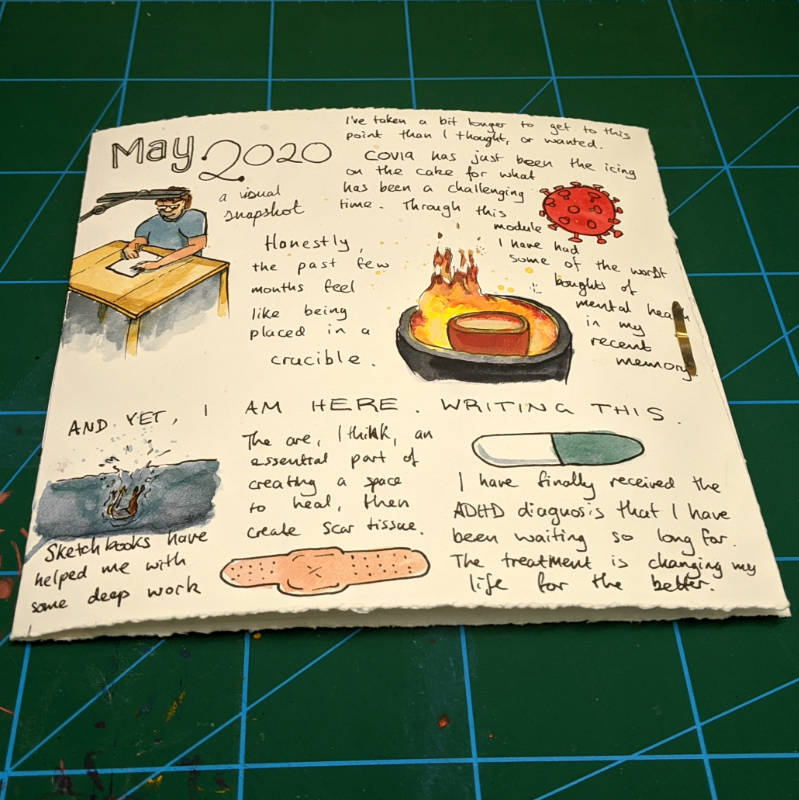From the point of reading through what I had to do through section five, this exercise was definitely the one I had the most problems with. Reading the brief, and then looking at how other students had approached it, it seemed like every visual journal ended up as a pile of papers, reports and scraps loosely clipped or tied together.
Through sections three and four, I really started to get an understanding of what a visual journal could be, and how unique one can make a visual record. It just seemed to me that there was an assumption that, from exercise 5.2 everyone would have piles of images lying around to stick together like a scrapbook.

I didn't have this and making a scrapbook-like sketchbook has not been the approach I have taken in my relationship with sketchbooks thus far. I felt very frustrated, especially after previous exercises had encouraged me to explore other artists' particular approaches to visual journals.
I emailed my tutor for advice. She gave me helpful advice:
"Really it's about trying to catalogue your strengths and interests and structure a book which acts as a document for new starting points and directions with your practice. See this less as a 'piece of artwork' and more as an organisation of thoughts. "
The brief wanted me to create "a snapshot summary of where you are at this stage of the course and where you want to go next in your learning journey". My work for the visual action plan had already explored where I want to take my learning journey.
So what I really wanted to tackle was a way to approach a 'snapshot'. I had made my own sketchbook ahead of time for the assignment and this had inspired me to make the tetra-tetra flexogram for Exercise 5.1. While I was researching that exercise I happened on another book called a 'tunnel book'.
I was intrigued by it. While I was creating my composite images for Exercise 5.2 I had a thought about how I might use this book as a way to represent the snapshot. I printed out the composite images and found some watercolour postcards. I then set to work.
I am really pleased with the tunnel book, and while it might be a little pop-up, it does capture everything I have learned combined with where I want to try things next. The different sections each mean something in their own right and in looking through the tunnel, you experience them together and in sequence.
I was conscious that the tunnel book was more of a piece of artwork. I wasn't really cataloguing my thoughts explicitly. So I decided to make a holder for the book that would allow me to store the tunnel book, flexogram and also have enough space for me to journal my thoughts. I had a spare single signature left over from creating my assignment sketchbook, so I decided to use that as an envelope. Inside, I used leftover paper to create a pouch for the books to sit in. That left only the signature itself to turn into a small journal to document my strengths, interests and direction.
I remembered the research I did into styles of visual journalling, and for this one decided to use spot illustrations to go alongside my text, which I wrote down almost as a stream of consciousness.
These pages comprised the cover and first page, and the pocket for the other books I made was on the right. I used a folding pin to create a simple clasp to hold it all together.
I realise that my frustrations coming into these exercises stemmed from the same place as my earlier in the module. It's a reaction to fear, and overwhelm. I think one of the most important things I should take away is that I have the ability and tenacity to overcome fear frustration and overwhelm. I am much better placed to cope with all three of these things than I was at the start. They don't go away and realising that is part of the secret ingredients needed to succeed.



















Opmerkingen